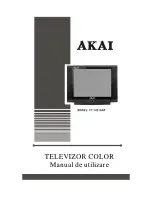
PM-1
PROGRAMMABLE MEMORY (PM)
Programmable Memory (PM) stores virtually all settings currently set on the transceiver. This transceiver provides 5 PM channels to
store 5 sets of transceiver confi gurations. Later, you can quickly recall any one of these channels, depending on the operations you
have in mind or the operating environment.
The following programmable settings cannot be stored:
• Memory name
• Memory channel lockout
• Channel Display mode
• Locked-band/ Cross-band Repeater ON/OFF
1
• Repeater mode
1
• Repeater hold
1
• Repeater ID transmit
1
• Registered repeater ID
1
• Wireless remote control
1
• Answer back
1
• Remote control ID
1
• Key lock
• Power on password
2
• Memory channel/ Call channel/ Program scan memory
• Weather channel
1
• DTMF memory
• EchoLink memory
• COM port speed
• PC port speed
• Microphone sensitivity
• 10 MHz mode
2
• Input/output level (DATA terminal)
2
• SQC data output logic
2
1
TM-D710GA
only
2
Can be set only by using the MCP-6A software.
APPLICATION EXAMPLES
The following are examples of how you might use Programmable
Memory. These examples may not represent applications useful
to you, but you will understand the fl exibility of this function.
Situation:
You share your transceiver with other members
in your family or club. However, each individual has personal
preferences for how they like to set various functions. You
have to keep changing many settings each time you use the
transceiver.
Solution:
Because 5 PM channels are available, up to 5
persons can separately program the transceiver and store
their customized environment. Then each person can quickly
change to his or her favorite settings, simply by recalling a PM
channel. It is too much trouble to change back the settings after
somebody else has reconfi gured them. So this application may
avoid having a feature-rich transceiver but never using many
useful features.
Situation:
While operating mobile on the way to work every
morning, you prefer a silent transceiver that does not interrupt
the morning calm. In addition, you feel that a bright display
is useless in the sunlight. At night when driving home, you
realize the Beep function truly does serve a purpose and you
acknowledge it is nice to see a bright display after dark.
Solution:
In 2 PM channels, store the same operating data such
as frequency, offset, tone, etc, and store different settings for the
Display brightness and Beep functions. Then you can quickly
recall the best settings for day or night operation.
Situation:
You cannot fi gure out how to exit the current
transceiver mode.
Solution:
Simply recall PM channel 1, which contains an exact
copy of the transceiver default environment. You will not lose the
contents of any memory channels.
















































